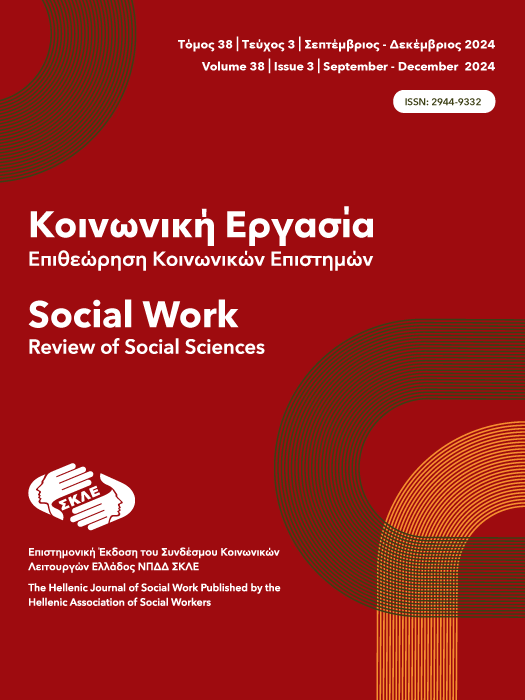Πέρα από τα σίδερα: εξετάζοντας την επίδραση του εγκλήματος στους συγγενείς σοβαρών παραβατών

Περίληψη
Η παρούσα εργασία εξετάζει το κατά πόσον οι οικογένειες των δραστών σοβαρών εγκλημάτων μπορούν να θεωρηθούν «δευτερογενή θύματα» του εγκλήματος. Αντλώντας στοιχεία από την υπάρχουσα βιβλιογραφία, υποστηρίζει ότι οι οικογένειες αυτές βιώνουν σημαντικές δυσκολίες: οικονομική καταπίεση, κοινωνικό στίγμα και συναισθηματική καταπόνηση. Με βάση το πλαίσιο της Arditti (2012), εξετάζονται τα σωρευτικά μειονεκτήματα, οι θεσμικές πρακτικές και το στίγμα που αντιμετωπίζουν αυτές οι οικογένειες. Η έννοια των «ιδανικών θυμάτων» (Christie, 1986) αναδεικνύει μια ένταση: αναγνωρίζεται μεν η ταλαιπωρία των οικογενειών αυτών, αλλά παράλληλα αναγνωρίζονται και οι αντιλήψεις της κοινωνίας περί «υπαιτιότητας». H εργασία επιχειρηματολογεί υπέρ της αναγνώρισης αυτών των οικογενειών ως δευτερευόντων θυμάτων. Κανονιστικά, αυτό θα προσφέρει αναγνώριση και υποστήριξη σε μια ευάλωτη ομάδα. Πρακτικά, θα καταστήσει αναγκαίες μεταρρυθμίσεις όπως ο εξανθρωπισμός των επισκέψεων στις φυλακές και η προώθηση των αρχών της επανορθωτικής δικαιοσύνης. Ωστόσο, η επίτευξη αυτής της αναγνώρισης αποτελεί πρόκληση λόγω του κοινωνικού στίγματος. Η εργασία καταλήγει με την έκκληση για αναμόρφωση της ποινικής κουλτούρας και την ενσωμάτωση της μεταμέλειας και της συγγνώμης στο σύστημα ποινικής δικαιοσύνης. Τελικά, η αναγνώριση των επιπτώσεων στις οικογένειες είναι ζωτικής σημασίας για μια πιο ολοκληρωμένη κατανόηση του εγκλήματος και των εκτεταμένων επιπτώσεών του.
Λεπτομέρειες άρθρου
- Πώς να δημιουργήσετε Αναφορές
-
Κουράκης Φ. (2024). Πέρα από τα σίδερα: εξετάζοντας την επίδραση του εγκλήματος στους συγγενείς σοβαρών παραβατών. Κοινωνική Εργασία. Επιθεώρηση Κοινωνικών Επιστημών, 38(3), 51–67. https://doi.org/10.12681/socialwork-rss.38377
- Τεύχος
- Τόμ. 38 Αρ. 3 (2024): 3/2024
- Ενότητα
- Άρθρο

Αυτή η εργασία είναι αδειοδοτημένη υπό το CC Αναφορά Δημιουργού – Μη Εμπορική Χρήση – Παρόμοια Διανομή 4.0.


